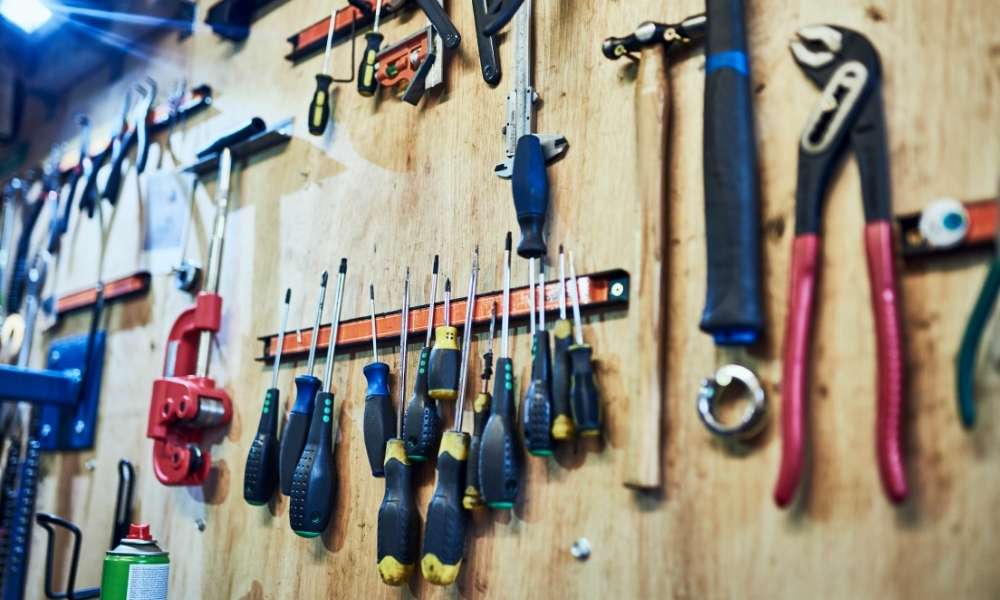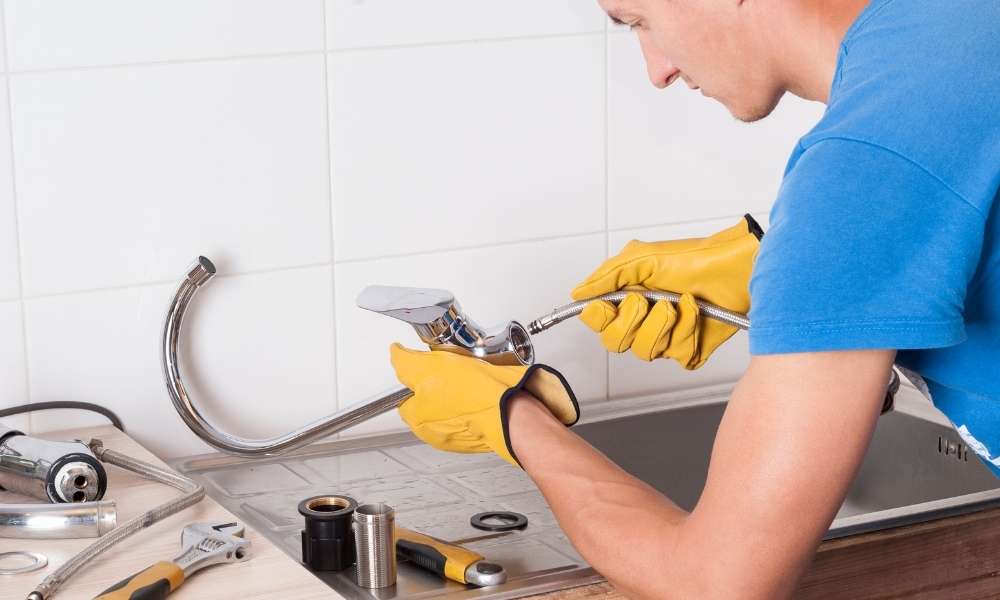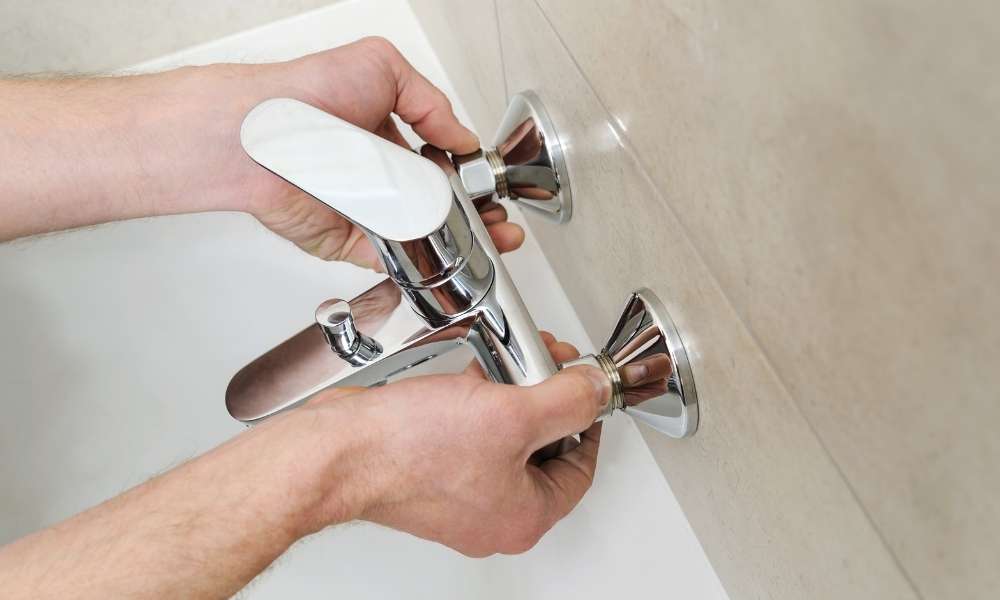Installing a new faucet in your bathroom sink can be an easy DIY project. It is a simple, straightforward process that will take very little time to complete. This article will provide you with all the information. You need to install your own faucet and make sure it is done correctly. You will also learn about some common mistakes people make when installing their own faucets.
Tools you will need

Before you start, ensure that you have all the tools necessary for this project. You will need a basin wrench, a pipe wrench, and some Teflon tape in order to install the new faucet.
Preparing the surfaces
Before you can install your faucet, you will need to prepare the surfaces. You will need to remove any existing hardware or old parts that are protruding from the sink. This may be a nut, bolt, pop-up ball, or washer. If you have an old faucet that is still attached to the sink and If you want to reuse it, it is a good idea to mark it. Where the holes are so they don’t get confused with new ones.
Installing the faucet

It is important to start by turning off the water supply. This can be done by turning the knob located on the pipes coming from your wall. You should then disconnect the hoses that connect to your old faucet and remove it from the sink. Next, you will need to find a hole in your sink as well as in your countertop for an escutcheon plate. You will need these holes so you can install a new faucet tailpiece.
The next step is to install a new faucet spout, which can be accomplished. By attaching it to the escutcheon plate with some plumber’s putty. Once this has been done you will need to insert the escutcheon Plate into it. The holes that have been drilled in your sink and countertop. Place a washer on each side of the sink and then attach it with screws on either side of the plate. After completing this, you can turn on the water supply and Test out your new faucet. While tightening down any loose bolts or fittings that may need adjusting. Before rehanging it from its mount over where it had originally been installed.
Troubleshooting and finishing touches

If you are able to, it is best to measure the size of your sinkhole prior to installing a new faucet. This will help ensure the faucet will fit snugly and won’t wobble or be too loose. Once you have installed the faucet, make sure to tighten any screws that may be loose and replace any missing washers. If there is a leak, check for worn-out O-rings, seals, or gaskets. You may need to purchase new ones if you don’t have them lying around. Double-check all connections for leaks as well. When finishing, go over your work with a light coating of oil to prevent corrosion on metal parts.
What to do if it doesn’t work
If you think your new faucet is not working, make sure to check the following:
– Did you turn on the water?
– Is there enough water pressure coming out of the faucet?
– Did you install everything correctly?
If the problem persists, try adjusting the water temperature or pressure. If that doesn’t work, call a plumber.
Helpful tips
Make sure the water is turned off to your sink before starting. Turn the water on and off, checking for leaks and all the parts that are. Attached to the stem pipe under or near your sink.
Once this has been determined to be done. Remove the faucet handle and other parts you find. Gently pull out the old faucet.
After it has been removed, clean up any leftover residue. Debris and then replace it with your new faucet. Double-check that you have all of your pieces and parts before installing them into place.
Replace any washers that may need to be replaced. As well as the seals around any pipes where the water flows from one pipe to another in order to make a seal.
-Tighten everything carefully with your wrench so there is no leaking when you turn on the water again. Clean up any remaining debris that fell down into the drainpipe when removing old faucets.
Prep Before Installation
Before installing your faucet, you will need to make sure you have all the necessary tools. You will need a basin wrench, Allen wrench, rubber or nylon mallet, adjustable pliers, screwdriver, and a few deep sockets.
You should also ensure that the water is turned off . By shutting off the main valve at the top of your water pipe. To make sure you know where this is located (or if you cannot find it), check your pipes in your home. There should be a shutoff valve right before the pipe enters and feeds into your house. Another way to look for this valve is to go outdoors and look at the service line that connects to your house.
Connect Water Supply
The first step is to connect the water supply for your faucet. You will need to turn the water off at the main water supply line in order to disconnect it from the house. Next, disconnect the old faucet from the sink and then reconnect it to the new one by screwing it into place. Make sure that you use a wrench or pliers before tightening down on the nut. This will ensure that there is enough torque applied. When connecting your new faucet and prevent any leaks in your home’s plumbing system. Once this is done, turn your water back on. And test out your new faucet!
See More: How To Choose Accent Wall In Bathroom
Similar Projects
There are many other projects that are similar to installing a new faucet. Here are just some of the projects that have a similar process:
Installing a ceiling fan
If you have any experience with these types of projects, then you should be familiar with the process. The only difference is that you may need to buy some extra materials, like pipe thread tape, to complete the project.
calculation
You will need to calculate the length of pipe needed for the faucet. For this, you will need to know the distance from the top of the sink cabinet or countertop to where you want to install your new faucet. You then need to add two inches on top of that number and divide it by 50. The result is how many inches long your new pipe needs to be.
Measure out where you want your faucet installed and measure out how many inches high you want it. For example, if you want a faucet placed at an 18-inch height, then you need a pipe that is 20-inches long.





